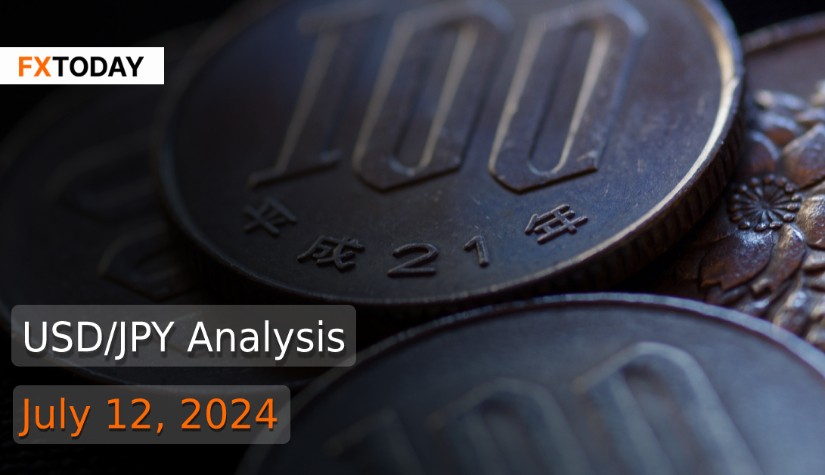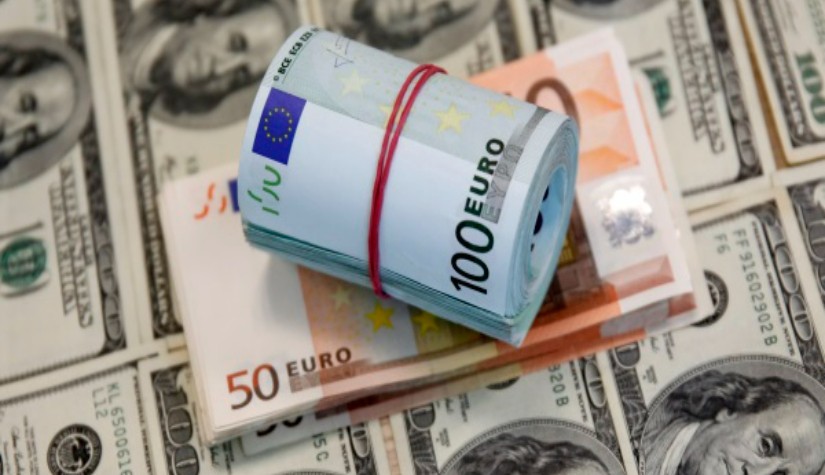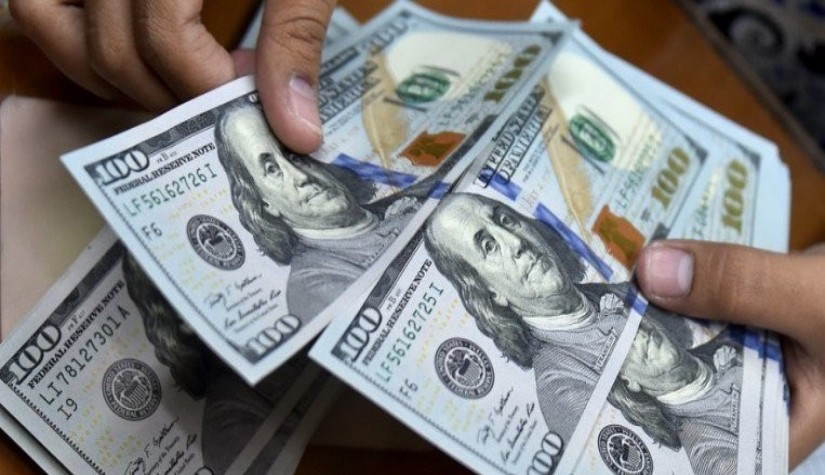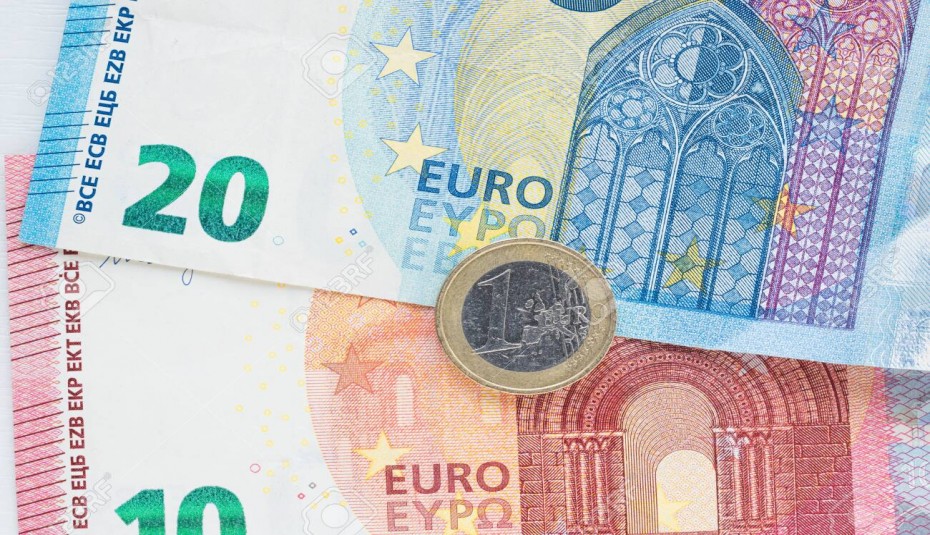Yen Surges Amid Speculation of Official Intervention and Disinflation in the U.S.
On Thursday, the Japanese yen experienced its largest daily increase since late 2022, surging nearly 3%. This was attributed by local media to official purchases aimed at boosting the currency, which had been at 38-year lows. Authorities last intervened in early May to support the yen.
Top currency diplomat Masato Kanda declined to comment on whether intervention had occurred but noted that recent yen movements were "not in line with fundamentals." On Friday, the yen eased slightly as investors remained cautious following its sharp rise.
Authorities have shown a pattern of timely interventions, often remaining silent on their actions. A national holiday on Monday could present another opportunity for market intervention. Despite recent interventions, the yen continued to struggle, hitting a 38-year low last week.
The Bank of Japan (BOJ) is expected to lower its economic growth forecast for this year in its July meeting, but maintain its inflation projection around the 2% target for the coming years. However, the BOJ is not expected to significantly alter its growth projections for fiscal years 2025 and 2026, maintaining its outlook for moderate economic recovery. The central bank will release updated growth and price forecasts on July 30-31 and consider raising rates from near-zero levels.
The BOJ highlighted wage hikes across the economy, driven by a tight labor market. Data showed a 2.5% increase in average base pay in May, the fastest in 31 years, though real wages fell for the 26th consecutive month due to higher import costs. BOJ Governor Kazuo Ueda emphasized the need for broad-based wage increases alongside rising prices to achieve the inflation target.
Wage growth momentum among small and medium firms, driven by labor shortages and inflationary pressures, might set the stage for another interest rate hike. A BOJ survey revealed that these firms recognize the need for continued wage hikes despite difficulties in passing costs to prices. The nation's largest union, Rengo, reported the highest wage hikes in three decades, averaging 5.10% this fiscal year.
Japan faces a projected shortage of nearly one million foreign workers by 2040 to meet economic growth goals. The Japan International Cooperation Agency (JICA) estimated 5.91 million foreign workers will be in Japan by 2040, falling short of the needed 6.91 million to sustain a 1.24% annual growth rate. The demand for foreign labor is crucial due to Japan's aging population and low birthrate. Efforts to attract foreign workers are ongoing, but challenges like the weakening yen, low wages, and human rights issues need to be addressed to remain competitive in the global talent market.
Nearly 90% of Japanese households expect prices to rise in the next year, according to a Bank of Japan (BOJ) survey, indicating increasing inflation expectations. However, households are more pessimistic about current economic conditions compared to three months ago, which could negatively impact consumption. Unexpectedly, Japanese household spending fell in May as higher prices squeezed purchasing power. Analysts expect consumption to rebound due to significant wage hikes and tax breaks.
However, core machinery orders fell for the second consecutive month in May, raising concerns about capital spending and sustainable recovery. Japan's wholesale inflation accelerated in June due to the yen's decline increasing raw material import costs. The corporate goods price index (CGPI) rose 2.9% in June, matching market forecasts and reaching a record high for the seventh consecutive month. The yen-based import price index climbed 9.5% in June, reflecting the weakening yen's impact on import costs.
Japan's current account surplus grew for the 15th consecutive month in May, reaching 2.85 trillion yen ($17.74 billion), exceeding expectations. The surplus was driven by a record primary income surplus, which offset the trade deficit, boosted by returns from overseas securities investments and the weak yen.
The yen also surged after U.S. data showed a drop in consumer prices for the first time in four years, indicating disinflation and raising the possibility of a Federal Reserve rate cut. Consequently, trading in the USD/JPY currency pair during this period may encounter higher risk and volatility. The yen is likely to weaken again after the start of next week if Japanese authorities do not intervene further.
Data for Technical Analysis (30Min) CFD USD/JPY
Resistance : 159.17, 159.21, 159.26
Support : 159.05, 159.01, 158.96
30Min Outlook
Source: TradingView
Buy/Long 1 If the support at the price range 158.90 – 159.05 is touched, but the support at 159.05 cannot be broken, the TP may be set around 159.19 and the SL around 158.83, or up to the risk appetite.
Buy/Long 2 If the resistance can be broken at the price range of 159.17 – 159.32, TP may be set around 159.45 and SL around 158.98, or up to the risk appetite.
Sell/Short 1 If the resistance at the price range 159.17 – 159.32 is touched, but the resistance at 159.17 cannot be broken, the TP may be set around 159.04 and the SL around 159.39, or up to the risk appetite.
Sell/Short 2 If the support can be broken at the price range of 158.90 – 159.05, TP may be set around 158.77 and SL around 159.24, or up to the risk appetite.
Pivot Points Jul 12, 2024 09:03AM GMT
|
Name
|
S3
|
S2
|
S1
|
Pivot Points
|
R1
|
R2
|
R3
|
|---|---|---|---|---|---|---|---|
| Classic | 158.88 | 158.96 | 159.04 | 159.11 | 159.19 | 159.26 | 159.35 |
| Fibonacci | 158.96 | 159.01 | 159.05 | 159.11 | 159.17 | 159.21 | 159.26 |
| Camarilla | 159.06 | 159.07 | 159.09 | 159.11 | 159.11 | 159.13 | 159.14 |
| Woodie's | 158.86 | 158.95 | 159.02 | 159.1 | 159.17 | 159.25 | 159.32 |
| DeMark's | - | - | 158.99 | 159.09 | 159.15 | - | - |
Sources: Investing 1, Investing 2
















